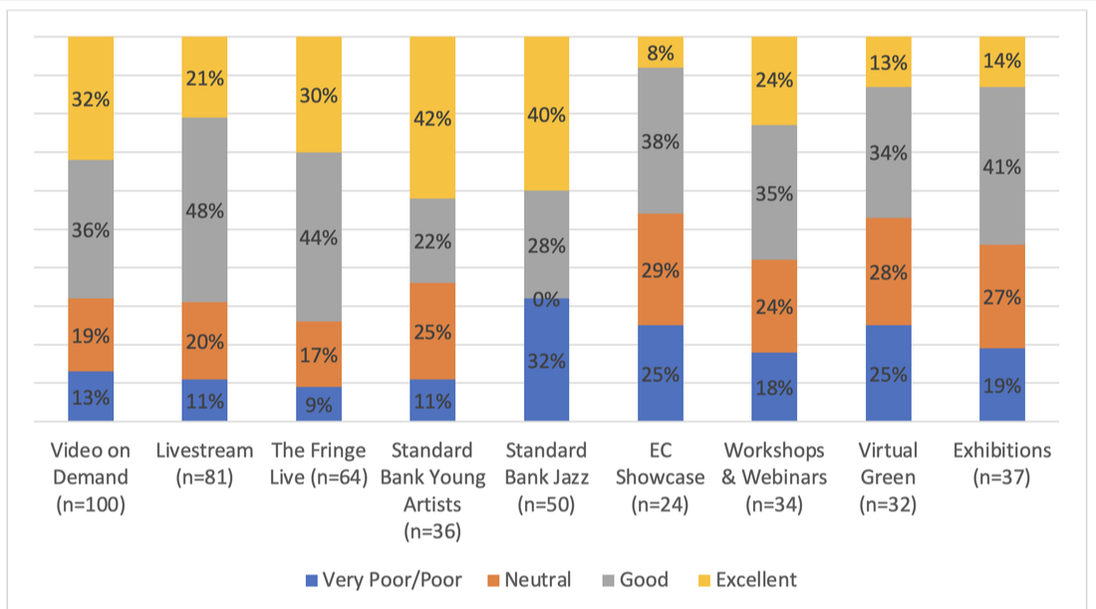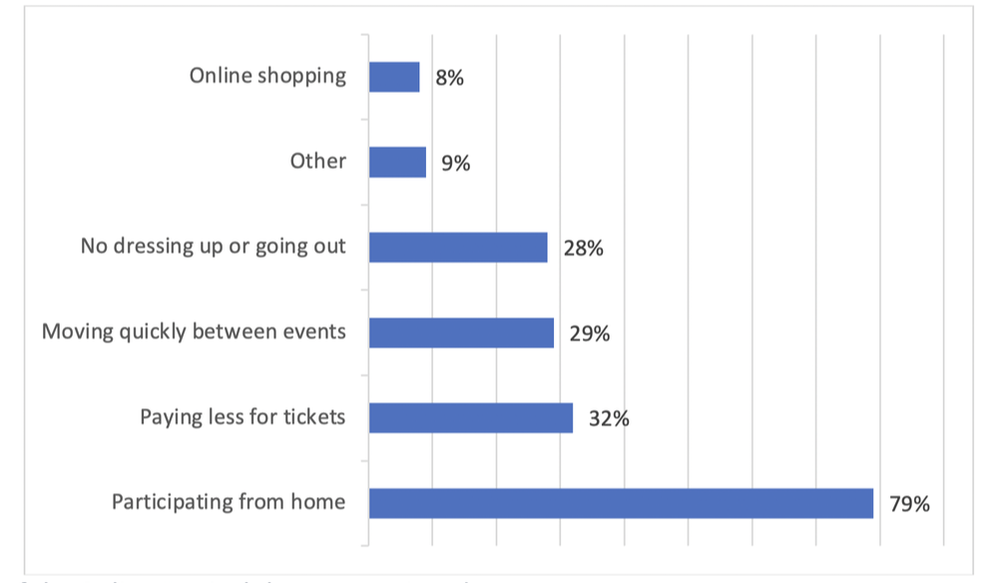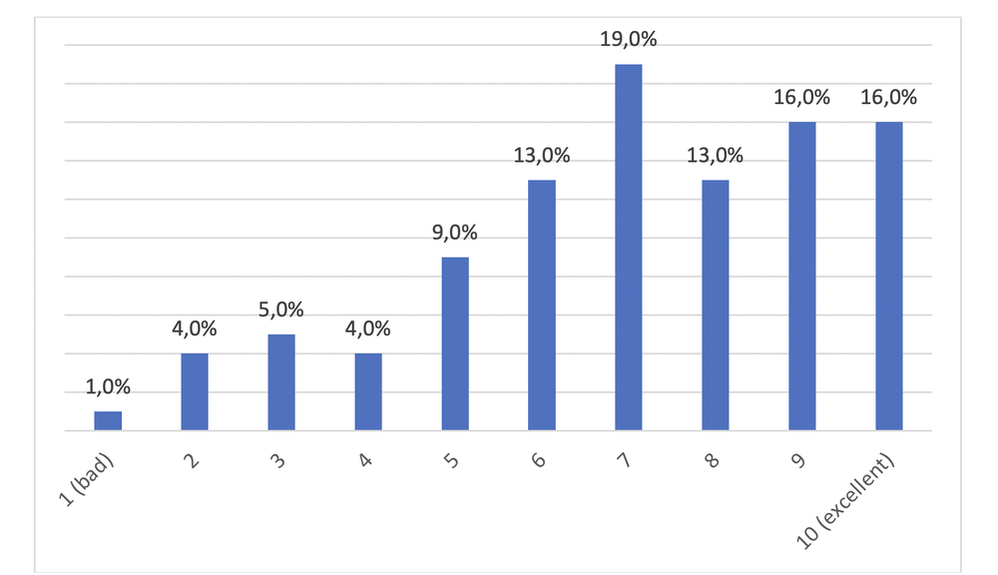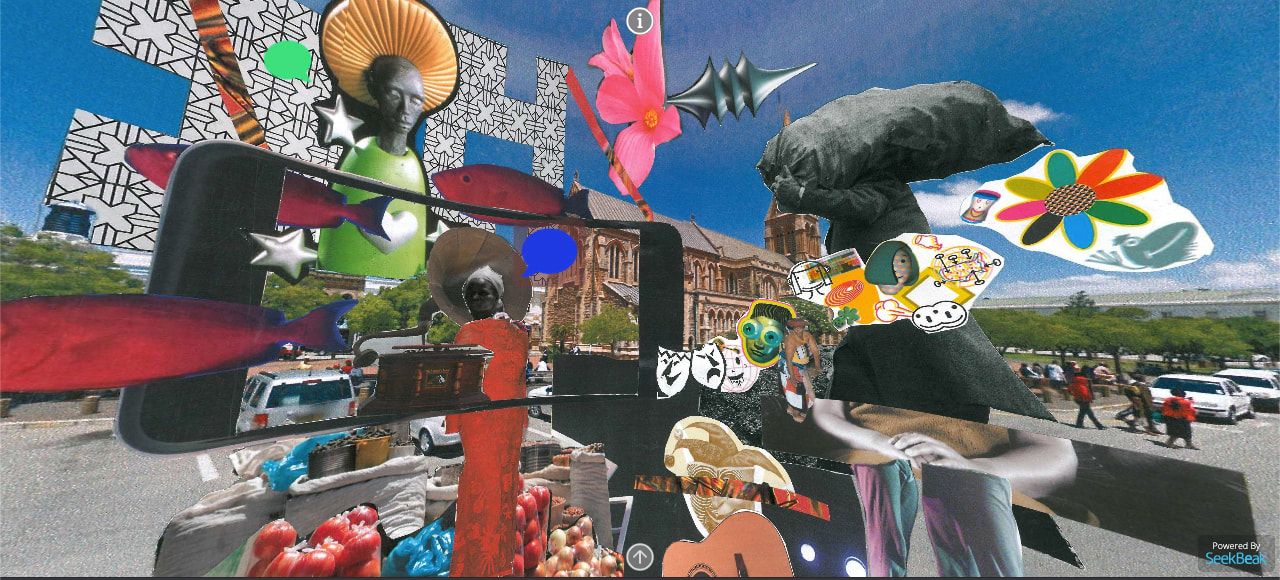|
The NAF was one of the first festivals in South Africa to move completely online to a virtual festival format in 2020, and to attempt a hybrid approach in 2021. However, just 10 days before the 2021 festival was due to start, South Africa entered into a strict lockdown that did not allow for live audiences. The NAF quickly regrouped and took the entire festival online with recorded and live-streamed performances. Since the planning and implementation of a hybrid approach to a festival has already been figured out, this should stand the NAF in good stead for future hybrid festivals as South Africa recovers from COVID-19. The NAF’s experience also illustrates the importance of flexibility in planning to be able to adapt quickly to changing situations. To collect information on how the NAF has navigated the crisis, research methods included online focus group discussions with festival organisers, an online audience survey, an analysis of Google Analytics website activity data, and a “Letters from the Future” project. Audience responses to the online editions of the NAF were mostly positive: 45% of respondents rated the NAF between 8 and 10 out of 10 for overall experience in 2021. The NAF tends to have a loyal audience as 57% of respondents reported having been to 4 or more previous editions of the festival and continuing to support the NAF in their online transition. There is also some evidence that the NAF succeeded in building new audiences: 25% of respondents said they were attending for the first time or had been only once before. Survey respondents tended to enjoy the 2021 virtual NAF as the majority of ratings were in the “good” or “excellent” categories for most components. While generally quite similar, younger festinos gave higher ratings to the Fringe Live, Exhibitions, Workshops and Webinars and the Eastern Cape Showcase (although note the small number of responses in the latter 3 categories), while older festinos rated Livestream and Jazz more highly. Audience ratings of Festival components Respondents were also asked to indicate which aspects of the National Arts Festival Online Experience they had particularly enjoyed or not enjoyed. The majority of festinos (79%) said that they enjoyed being able to participate in the Festival from home, without having to travel. Smaller groups said that they appreciated having to pay less for tickets (32%); being able to move quickly and easily between shows and events (29%); and not having to “dress up and go to see shows and events” (28%). Aspects of the Online Festival that were enjoyed In terms of aspects that were not enjoyed, nearly three-quarters of respondents said that they missed the “excitement and vibe of going to a live event” (74%), and that they missed the experiential aspects - “the sense of connection to performers and artists that you get at a live event” (73%). Smaller groups missed being able to “socialise and party with friends and fellow festival-goers” (49%), not being able to experience the food and drinks on offer (39%); and not being able to travel to a new place (30%). Only 13% reported that they had struggled with the technology in accessing online content. More than half (57%) of respondents felt that they definitely preferred the live event; 26% said that they liked the live event, but that the online edition of the Festival was also fun. Much smaller groups said that they liked some aspects of the online event more than the live event (14%) or that they definitely preferred the online event (3%). These results imply that, while there is definite potential for hybrid events, most respondents miss the experiential aspects of attending a live Festival and would want to return to that in the future, at least in part. Accessibility is also increased by having online events, though this is hampered by the digital divide in South Africa. Finally, respondents were asked to rate their National Arts Festival Experience 2021 overall on a 1 to 10 scale, where 1 meant “very bad” and 10 meant “excellent”. As shown in the figure, ratings were generally good, with 45% of respondents rating their overall experience as an 8, 9 or 10 out of 10 (good to excellent). 32% of respondents rated their experience as a 6 or 7 out of 10 (fair to good); and 23% rated it as 5 or below (fair to poor). For those who rated the overall Festival as 1 to 5, the most common reason was because of the difficulty in navigating the website. Overall ratings of National Arts Festival Experience However, there was a marked reduction in NAF online activity between 2020 and 2021 as an analysis of Google Analytics data showed. This may be because of other events at the time of the 2021 festival edition (such as the social unrest in some provinces in South Africa, an increase in COVID-19 lockdown level, and the Olympic games), but may also be because of general “screen fatigue”. The much higher bounce rate in 2021 may also indicate that aspects of the NAF website user experience could be improved. In terms of audience behaviour, online audience views of 2020 shows built up over the first few days of the festival to peak at day 10, before steadily decreasing again. The decrease beyond the first ten days of each festival is to be expected, since the NAF has always been a 10-day event, and livestreamed content was available during this time. Insights from the daily popularity of the site allows festival organisers to deduce when the site is most active and to use this information to schedule livestreams to optimize viewership and revenue generation. Thursday, Friday and Saturday were the most popular days for both 2020 and 2021. Hourly data for both years shows that the visitors peak between 7pm and 9pm and dip between 3am and 5am. Given these patterns, it would be ideal for festival organisers to schedule livestreams from Thursdays to Sundays between 7pm and 9pm for optimal viewership. The online environment does offer the potential for the NAF to reach more international audiences. 80% of the visitors in 2020 came from South Africa and this decreased to 75% in 2021. For both 2020 and 2021 most foreign visitors came from the United States and the United Kingdom. As with almost all South African festivals who moved to an online format, monetization of content was a challenge, and the festival relied on public and private sponsors in order to continue. The fall in income generated from ticket sales and spending data reflect a general challenge with online cultural events: that monetising the content is difficult. This may be because of falling household incomes during the pandemic, but the relatively high-income levels of most respondents cast doubt on this explanation. Other reasons for lower online spending could be the very high levels of competition and variety in online content, much of which is provided for free on platforms like YouTube, or at very low prices on OTT services like Netflix. It may also be that online content, which in many cases audiences are used to being able to access for free, is not perceived as having the same value as an in-person experience. The change in format to include online and hybrid festival events necessitated a huge investment in skills and a steep learning curve for managers, artistic directors and creatives. A key factor management had to keep in mind was their reason for adapting and why they were continuing to produce a festival during a global pandemic. For many festivals, including the NAF, supporting festival stakeholders like artists and technical crews has been an important motivation. The NAF took on a collaborative role, supporting artists in their production of online content by providing access to recording studios, workshops and webinars. The COVID-19 pandemic, although devastating, has acted as an opportunity in disguise to re- evaluate and redesign the NAF. Using the metaphor of a tree, the NAF organisers discuss the need for a “hard prune” to cut away what no longer works and re-grow the festival by introducing new components and re-thinking the festival format and offering so that it is sustainable in the long-run and functions as a healthy tree. Though a difficult process, the pandemic has prompted several festivals interviewed for this research to refocus on their core mission, aims and objectives. For the NAF, the heart of the festival resides in Makhanda. This has become apparent to festival organises through the pivot to an online festival where there is a feeling that so much of what makes a festival was lost. The futuring project sought to provide festival audiences, artists, and organisers with the opportunity to step back and imagine what the NAF could be like in 2030. Many of the scenarios imagined ways in which online and mobile technology and applications could be used to increase the accessibility, collaboration and inclusivity of the future NAF. Interestingly, the physical location of the festival remained important (“the heart of the festival”), and ways of building on its historical context and sense of African identity while expanding its reach was a recurring theme. Still image of the NAF portal created by artists blk banaana (Duduetsang Lamola) and Francois Knoetze representing ideas from the Letters from the Future. This interactive world acts as a portal for the further imagining of the NAF and can be explored at https://seekbeak.com/v/35ze4nP91An To read the full report, please contact us via email at [email protected] or complete the contact form.
0 Comments
Leave a Reply. |
Future Festival BlogKeep up to date about the latest research and reflections from the team Join our mailing listArchives
March 2023
Categories |






 RSS Feed
RSS Feed


